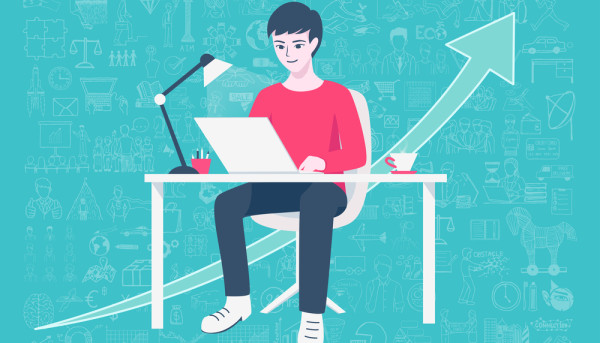How to Determine How Much Coverage You Need

Whether you are looking to buy insurance for your home or for your business, it is important to know how much coverage you need. The amount of coverage you need will depend on the size of your home, the type of property you own, and the type of insurance you need.
Life insurance
Getting the right amount of life insurance coverage is an important decision. You should not choose coverage that is too low or too high, and you should consider your family's needs when determining how much life insurance to buy. You should also consider the financial obligations you have. If you have outstanding debts such as student loans, mortgages, car loans, or credit cards, you should purchase insurance that will cover them in case of your death. This will ensure that your family is not left to bare the financial burden in the event of your death.
There are many different methods you can use to calculate how much life insurance you will need. The best method is to talk to a financial advisor. The financial advisor will help you assess your situation and decide how much coverage is needed. They will also consider your age, your family's needs, and any financial obligations you may have. You can also calculate your life insurance needs using an online calculator. Using a life insurance calculator is a more accurate way to determine how much life insurance you will need, because it takes into account specific financial factors.
One common rule of thumb is to multiply your annual income by ten. This means that if you earn $100,000 a year, you should purchase $1 million in life insurance. This amount does not take into account other expenses such as insurance deductibles, which are small fees paid in addition to the policy's premium. If you have college tuition to pay or outstanding debts, you may need more coverage than a simple calculation would indicate.
Another way to determine how much life insurance to buy is to calculate the DIME formula. This is a way to estimate how much insurance you will need, taking into account how much you have in assets and how much you owe in debt. It's a more detailed method than simply multiplying income, but it does disregard your current financial resources.
Using this method can give you a rough idea of how much life insurance you will need, but you should always consult a financial advisor. This will ensure that you buy the right amount of coverage. Your family will also benefit from the reassurance of knowing that you have coverage should the unexpected occur. If you are under the age of 65, you may be able to purchase life insurance coverage from your employer. Employees may also be able to purchase additional life insurance through payroll deductions.
Another way to calculate how much life insurance you will need is to calculate how much you have in liquid assets, such as savings accounts. This may include life insurance policies you have in place or funds from an existing college fund. You should also consider your future expenses, including funeral costs. In addition, you should account for inflation. If you are a family that enjoys dining out and going to the movies, you may want to include these expenses in your calculation.
Homeowners insurance
Having enough homeowners insurance is an important part of protecting your investment. The amount of coverage you need will depend on several factors, including your location, your home's replacement cost, and your personal assets. You should also keep in mind that home insurance rates can increase every year. However, there are steps you can take to determine how much coverage you need and how much it will cost.
The first step in determining how much home insurance coverage you need is to determine how much it will cost to rebuild your home after a natural disaster. A standard homeowners policy covers damage due to fire, explosions, and hail. However, it does not cover flooding or infestation from pests. Depending on your needs, you may also need additional liability coverage. Similarly, if you have an expensive home or personal property, you may want to add an umbrella policy to your policy.
After you have determined the amount of coverage you need for your home, you can then discuss the matter with your insurance agent. In many cases, the insurance company will allow you to pay for the policy in installments. If you do not have a lot of money to spend, you may want to consider a higher deductible. This will lower your premium. You will also have to consider how much you can pay out of pocket for a claim. You can also use online calculators to help verify the calculations you make.
If your home is located in an area where the risk of natural disasters is high, you should also consider buying earthquake coverage. An earthquake policy is generally available as an endorsement to your existing homeowners policy. However, you should always discuss your needs with an independent insurance agent. This way, you can find the policy that best fits your needs.
You should also consider the cost of rebuilding other structures on your property. This includes outbuildings, lawns, and other features. Your insurance agent will be able to tell you what these costs are, and can help you calculate your own.
If you are planning on renovating your home, you should also take an inventory of your belongings. You should also note where you purchased the items and when you purchased them. This will help you determine what types of items you need to insure. It is also a good idea to make a list of your living expenses.
During the renovation process, it is also a good idea to get a second opinion from an independent insurance agent. He or she will be able to find a policy that covers your needs. If your home is in a high-risk area, you may need flood coverage. You should also make sure that your insurance covers liability lawsuits.
Liability insurance
Having the right liability insurance can protect you and your passengers in case you are involved in an accident. This type of coverage covers damages to other people's property and injuries to other people as a result of a car accident. The amount of liability insurance you will need to carry depends on several factors. Below are a few guidelines to help you decide how much coverage you will need.
First, consider how much your assets are worth. If you have a large home or other assets, you may need more liability insurance. It may also be a good idea to purchase an umbrella policy that provides extra liability coverage. You can also check with your lender to see if they require additional liability coverage.
Then consider the average cost of a visit to the ER. A visit to the ER can cost as much as three thousand dollars, and there are many other costs incurred after an accident. These costs can include medication, recovery, surgery, and treatment. The cost of medical costs can easily reach hundreds of thousands of dollars.
The next thing you need to consider is how much you are willing to pay in deductibles. Depending on your insurance company, the deductible could be $250, $500, or even $1,000. The higher the deductible, the more you will have to pay out-of-pocket for a claim. Having a lower deductible will increase your premium, so it is worth considering how much you are willing to pay.
Aside from the amount of liability insurance you need, you may also need collision or comprehensive coverage. Depending on your car, these types of coverage may be required by your lender or dealership. Collision coverage will cover damages caused by collisions with other vehicles, while comprehensive coverage will cover damages caused by vandalism or natural disasters. Comprehensive coverage will also cover damages caused by theft or vandalism of your own vehicle.
A final factor to consider is how much you can afford to pay for liability insurance. Most drivers should have liability insurance that is at least 100/300/100. This means that each person involved in an accident will be covered for up to $300,000 in bodily injury liability and $100,000 in property damage liability. If you can't afford this amount, you might consider a 50/100/50 policy, or you can choose to buy additional liability insurance.
In addition to the type of liability coverage you have, the amount of insurance you need also depends on your driving history. A higher risk driver will require higher liability limits. In addition to the standard requirements of liability coverage, some states require uninsured and underinsured motorist coverage. These types of policies will cover the medical bills of drivers who are injured by others who don't have enough insurance.











